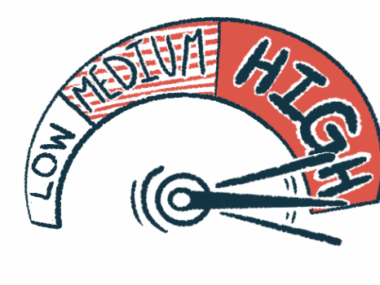Half of AAV Patients in Study Develop Poor Long-Term Outcomes
Risk factors ID'd included impaired kidney filtration and low blood potassium
Written by |

Half of patients with ANCA-associated vasculitis (AAV) developed a poor long-term outcome — kidney disease, cancer or death — in the years after their diagnosis, according to a recent study in China.
Impaired kidney filtration, low blood potassium, older age, and kidney or heart involvement at diagnosis were among the risk factors for these outcomes.
“To our knowledge, this is the first long-term study to comprehensively assess the risk factors for Chinese AAV outcomes,” the researchers wrote, noting that the findings should be “further explored in the future.”
The study, “Predictors of poor prognosis in ANCA‑associated vasculitis (AAV): a single-center prospective study of inpatients in China,” was published in the journal Clinical and Experimental Medicine.
Despite therapies to move AAV into remission, the disease still sometimes is linked to chronic complications, including kidney disease, cardiovascular disease, and cancer, that drive poor long-term prognoses in patients.
“Early and correct identification of risk factors is important to assess their condition and improve AAV,” the research team wrote. “However, the predictors of adverse outcomes … occurring in the Chinese AAV population explored by long follow-up have not been fully investigated.”
To learn more, the researchers conducted a long-term follow-up of 89 patients diagnosed with and treated for AAV at Shanghai Tongji Hospital, China, from January 2008 to December 2020. Patients were followed by phone or in the outpatient clinic from diagnosis up to January 2022.
The goal was to evaluate the occurrence of “high risk outcomes,” including death, cancer, and the need for renal replacement therapy (e.g. dialysis), an indicator of kidney failure.
Overall, the 89 patients (44.9% female) had a mean age of 69.5 and were followed for a median of three years. Most patients (74 people) had microscopic polyangiitis (MPA) and 69 had myeloperoxidase antibodies, which is consistent with the prevalence of AAV types in China.
Ultimately, 46 people developed a high-risk outcome, including 29 who died, 20 who needed renal replacement therapy, and 12 who developed a tumor. No patient underwent a kidney transplant.
Having high levels of the complement 3 (C3) protein or a high estimated glomerular filtration rate (eGFR), a measure of how well the kidneys can filter out waste, was associated with a lower risk of developing any of those outcomes.
But each specific outcome also was associated with its own risk factors. Specifically, patients who had low blood potassium levels at diagnosis (baseline) were more likely to develop a tumor than people with normal potassium.
“Long-term monitoring of blood potassium levels should be performed in AAV patients, which may be beneficial to early screen tumor,” the researchers wrote.
Predictor of renal renal replacement therapy
In final statistical analyses, greater overall disease activity, measured with the Birmingham Vasculitis Activity Score (BVAS), was a significant independent predictor of renal replacement therapy. For every one unit increase in BVAS score, the risk of that outcome increased by 29%.
In contrast, for every unit increase in eGFR or C3, the risk of renal replacement therapy was reduced by 21.8% and 6.6%, respectively. BVAS, eGFR, and C3 have all been linked to kidney function or disease in AAV previously.
Infection and organ failure due to active vasculitis were the main causes of death among patients who died during follow-up. Independent predictors of mortality were being at an older age when diagnosed and impaired eGFR.
Overall, patients with cardiac or renal involvement were also significantly more likely to develop end-stage kidney disease and had lower overall survival than patients without these complications.
For patients using a high dose of hormone-pulse therapy (i.e., glucocorticoids) at diagnosis, the risk of renal replacement therapy was moderately, but significantly, elevated. This finding may be related to the relatively severe disease in patients prescribed this type of treatment, the team noted.
“The use of hormone pulse therapy in patients with first AAV diagnosis is considered to have severe organ involvement and poor long-term prognosis,” they wrote.
Few patients in the study were treated with rituximab, an immunosuppressive treatment that is sometimes used to induce or maintain AAV remission.
“[Rituximab] is rarely used in China, which may be one of the reasons for the high mortality rate in the early stage of this study,” the team wrote. “Studies at home and abroad have confirmed that rituximab is a good inducer of remission.”
The team noted a small sample size and an inability to adequately compare different AAV types mark study limitations.
“Those limitations could be improved by a multiple-center study in our further work,” they wrote.






